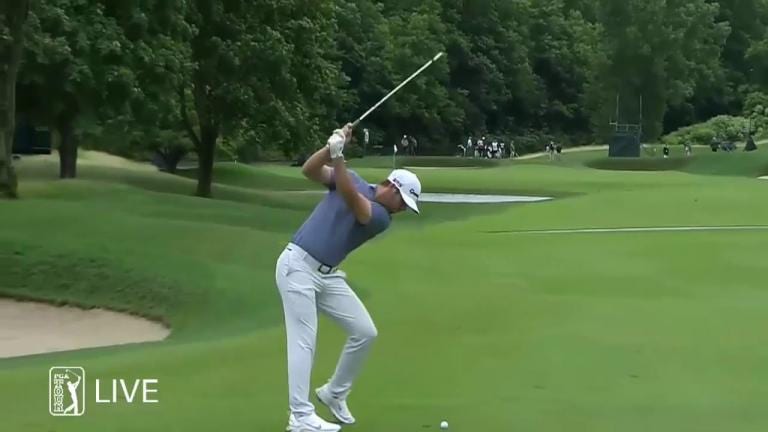 Butch Harmon has been rated the #1 golf instructor in America by 1,500 of his peers for the past nineteen years. Butch has taught Greg Norman, Tiger Woods, and many of the best players on the PGA Tour.
Butch Harmon has been rated the #1 golf instructor in America by 1,500 of his peers for the past nineteen years. Butch has taught Greg Norman, Tiger Woods, and many of the best players on the PGA Tour.
That is quite an accomplishment for a guy I used to know, yet hardly anybody did (sorry Butch), when he was the head pro at the Texas City Municipal golf course south of Houston for many years back in the 1970s. Our kids even attended the same high school. But I didn’t know Butch was that good of a golf swing instructor. His brother Craig Harmon was making a name for himself by teaching young players such as Fred Couples (also from Seattle), a University of Houston golf team product.
However, I believed the Harmon brothers knew something about the golf swing. Their dad, Claude Harmon, was the head pro at the famed Winged Foot Golf Club in New York (1945-1978), and he taught some outstanding pros during his career. But the main thing I cared about was that I knew that Harmon Sr. used film to study swings, especially that of Ben Hogan, so I was told. Nobody studied film back then.
In my opinion, that’s how you really learn the golf swing. So, in my first year on the PGA Tour, I bought a regular 8mm camera and started taking films of myself and the best players on Tour. I was the only pro on Tour for many years who did that. In fact, I soon asked Jack Nicklaus if he had ever seen his golf swing on film, and I was surprised when he answered, “No.”
Well, Peter Morrice at Golf Digest reports (November 26 issue) that about six weeks ago none other than Butch Harmon had a golf swing lesson. He went to Westlake Golf Course in Westlake Village, California, and had a lesson by upstart professional instructor George Gankas. When Butch told friends he was going to do this, he says they told him, “He’s wacky, why do you want to do that?”
Butch answers, “I like people who are different. I’m 76 years old, but I always want to learn from whoever’s doing new things. Plus, George is really getting results, and that’s what makes a teacher great.”
 So, what’s up with George Gankas, who nobody heard about until this year? He teaches young PGA Tour player Matthew Wolffe that crazy loop-de-loop swing that makes Jim Furyk’s swing look like Sam Snead’s. If you didn’t see Wolffe win his first tournament on the PGA Tour, which was something like only his fourth tournament, then you don’t know what you were missing. He is truly a wolf! He holed an eagle putt on the last hole to win the 3M Open at TPC Twin Cities in Minnesota. But the biggest news is his swing.
So, what’s up with George Gankas, who nobody heard about until this year? He teaches young PGA Tour player Matthew Wolffe that crazy loop-de-loop swing that makes Jim Furyk’s swing look like Sam Snead’s. If you didn’t see Wolffe win his first tournament on the PGA Tour, which was something like only his fourth tournament, then you don’t know what you were missing. He is truly a wolf! He holed an eagle putt on the last hole to win the 3M Open at TPC Twin Cities in Minnesota. But the biggest news is his swing.
That’s why Butch Harmon wanted to see what George Gankas has got. This 20-year old Wolffe kid he teaches is no fluke. He won the 2017 U.S.G.A. Juniors and the 2018 NCAA while attending Oklahoma State. Plus, he hits the ball a mile!
Gankas teaches a shut-to-open club face swing. That means (for right-handed golfers), the left wrist bows on the backswing, which usually results in a closed club face at the top of the backswing that aims up in the sky. Wolffe also raises his left heel off the ground a lot. Then Gankas teaches Wolffe to swivel his hips extremely fast on the downswing, which naturally opens the club face on the downswing so that it is square to the target line at impact.
There really isn’t anything new about this type of backswing. Many great pros in the history of the PGA Tour have played closed-to-open, in which an extreme effort is made to keep the club face from turning over naturally in the impact area and thereafter. The latter is usually done with what’s called “a block,” in which the club head does not release much on the upswing.
In fact, I’ve mentioned this before–that I once asked Arnold Palmer why he swung closed-to-open. In his case, it resulted in a block follow thru that was unorthodox looking. He answered me, “When I was young, I learned I could drive the ball straighter that way.” For a pretty long hitter in our day, Arnie was a really straight driver.
But the thing that makes Wolffe’s swing look so unorthodox is that he closes the club face on the backswing and points the shaft way right of his target at the top of his backswing even though he doesn’t have much wirstcock and therefore his club shaft does not even reach parallel to the ground. If he got to parallel, his club shaft would point even farther to the right.
But actually, Wolffe doesn’t have his club face closed at the top of his backswing. You can’t close the club face with your right elbow stuck way out like he does, called “a flying right elbow.” Thus, Wolffe closes the club face on his takeaway, but his flying right elbow opens his club face so that it is probably a bit open at the top. An open club face at the top of backswing results in the club head hanging down, aiming at the ground.
What happens is that Wolffe’s fast and big hip hip turn on his downswing reroutes his clubshaft from aiming way right of his target at the top of his backswing to bringing his swing path online to his target at impact. If he didn’t make that fast and large hip turn, his divots on his iron shots would aim way right of his target, resulting in his ball flying off to the right of his target.
Larry Nelson was somewhat of an example of what I’m talking about. Like Matthew Wolffe, Larry didn’t have much wristcock on his backswing, and his club shaft pointed to the right of his target even though he didn’t get to parallel at the top. But his early and full hip turn on his downswing brought his swing path online to his target at impact. And Larry was a very sneaky long hitter, one of those guys you ask yourself, “how is he hitting it that far when it doesn’t look like he’s swinging hard?” Another pro who does this is long-hitting J. B. Holmes.
So, the way Matthew Wolffe gets his enormous club head speed is that he subtly increases the angle of his wristcock (and Nelson did too) on his downswing, largely with his early and fast swivel of his hips. That creates enormous club head speed.
However, that works when you’re 20 years old. Keep on doing that and you might be in a rocking chair when you’re 50. Just look at poor Tiger Woods: four left knew surgeries and four lower back operations, with the last one being a fusion of three vertebrae. That means Tiger had to revamp his swing to even play the game again. He had a quick hip turn on the downswing, and that’s how he hit the ball so far. But nowadays he has a smooth turn, and it’s working well for him. He just has to hit a seven iron to the green on those long par fours instead of a wedge like he used to.
When Gankas told Harmon to start his backswing with a closed club face and then turn his hips more on his downswing, Butch says, “I knew I should turn harder when the face was more closed coming into the shot, but my body doesn’t rotate like it used to. We saw on video when we started that my hips and shoulders were basically square at impact. But when he stood behind me and pulled my left shoulder around, it was a totally different feel. I went from square at impact to about 30 degrees open. That’s a huge change that led to straighter shots and more speed.”
Yeah, but at 76 years of age, that added stress on your back due to more and earlier rotation of your hips might sent you to the chiropractor, Butch!











